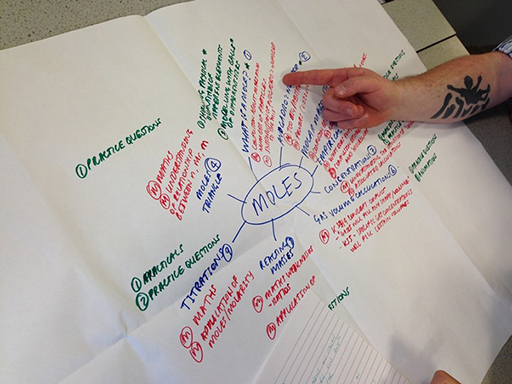2 Tricky topics as a practice-based application of threshold concepts
Tricky topics are a practice-based application of threshold concepts. The term ‘tricky topic’ emerged from a European project called JuxtaLearn which was investigating the use of creative video-making by students as an intervention to help them overcome the barriers presented by threshold concepts. Initial workshops were held with science teachers to explain the aims of the project and how to identify threshold concepts, very much as you have been presented with information at the start of this week’s work. The teachers were encouraged to focus on the examples of student misunderstandings they encountered in their practice, either in direct face-to-face teaching or in homework. The initial reaction of teachers was to say that everything was a threshold concept, because all topics presented challenges, though clearly this was not the case. Using the threshold concept criteria, the teachers then identified three initial threshold concepts in secondary school science which were:
- Chemistry – moles
- Physics – potential difference
- Biology – Alleles or cells (for students who hadn’t yet studied Alleles)
The teachers then focused on and identified discrete elements within each threshold concept that caused problems for the students. They mapped out these elements using paper and pen. One of the Chemistry concept maps for moles is shown below.
At the suggestion of the teachers, threshold concepts were referred to as ‘tricky topics’. This fulfilled two goals. It framed the research in language that was familiar to both teachers and students, making it much easier to explain. It also removed the restriction on what difficult topics the project could engage with. The teachers pointed out that some of the tricky topics they struggled with year on year were not actually full-blown threshold concepts, however it would be of great use to them if they could help their students overcome those barriers.
Thus the term ‘tricky topic’ was adopted to refer to any troublesome topics as identified by teachers and practitioners. Such topics may not have been given the status of ‘threshold concept’ by academics but as practitioners have identified these topics, they merit attention. The students in the project were then helped to overcome the barriers to understanding these tricky topics by being encouraged to use creative video-making to explain their understanding to others, thereby revealing the gaps in their understanding. You will meet these video making interventions again in Week 6.
Below is a video on tricky topics to help your understanding. In this short video, which talks about the JuxtaLearn project, a maths teacher explains how tricky topics have successfully underpinned a process that used creative video-making as the intervention to help students understand long division in mathematics.
Activity 3 Tricky topics video
Watch Video 1, which is about the JuxtaLearn project and its use of tricky topics.


